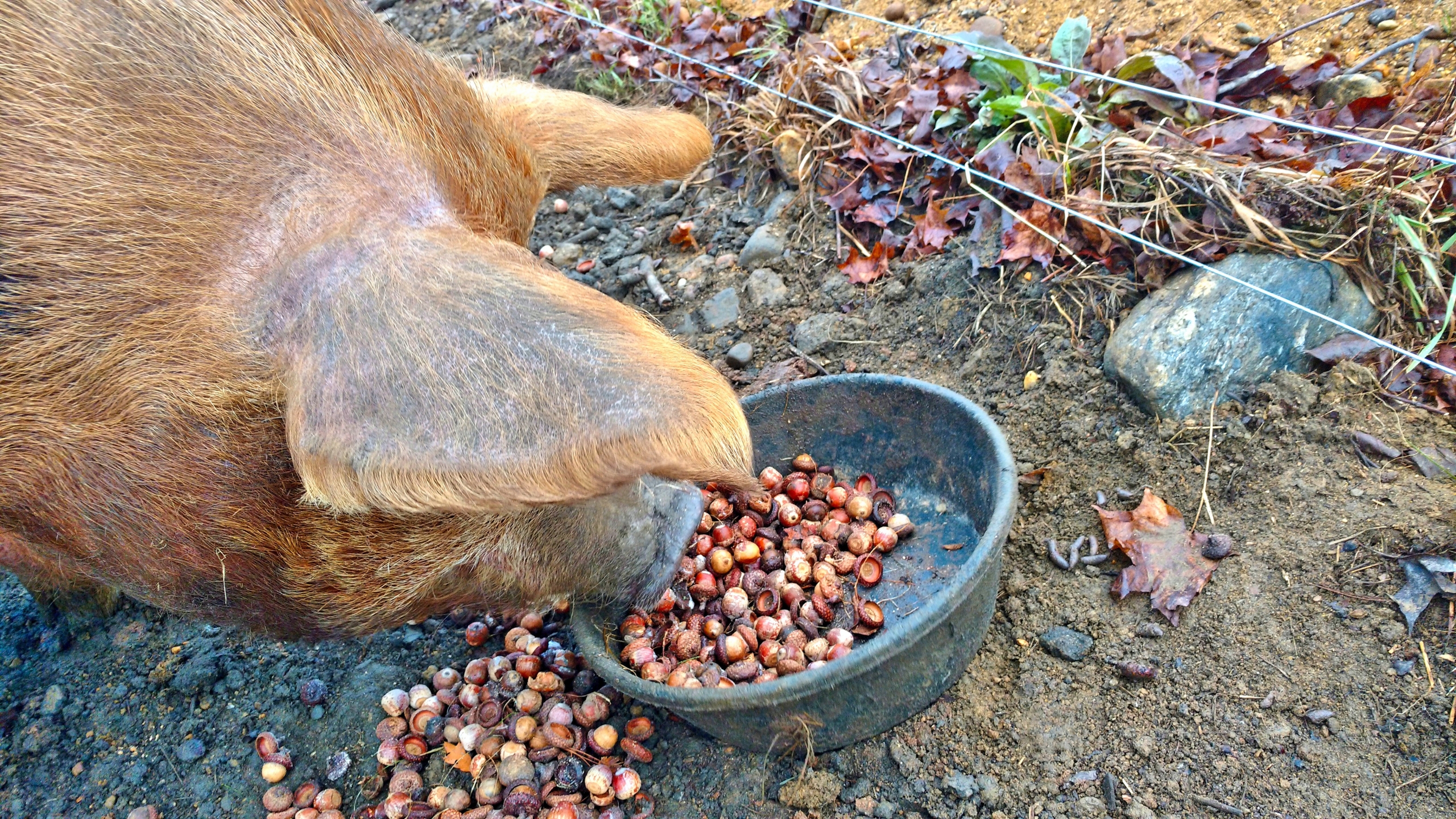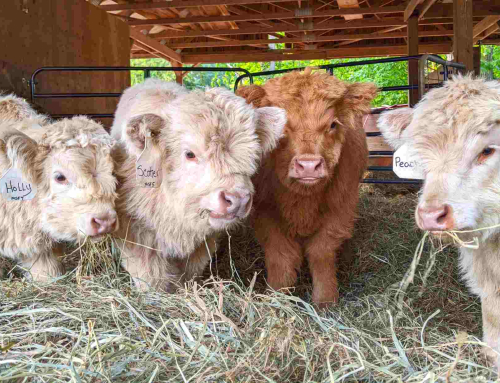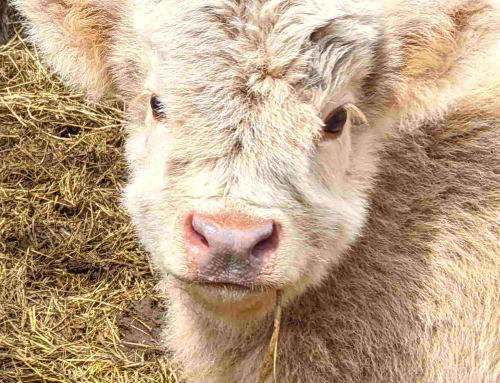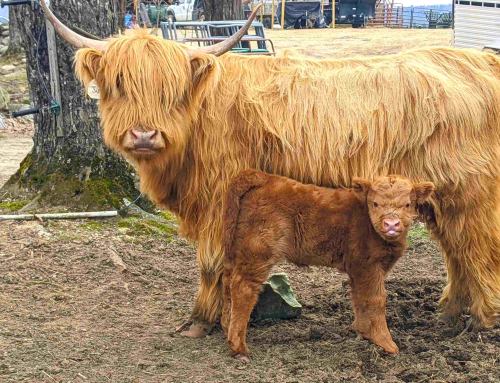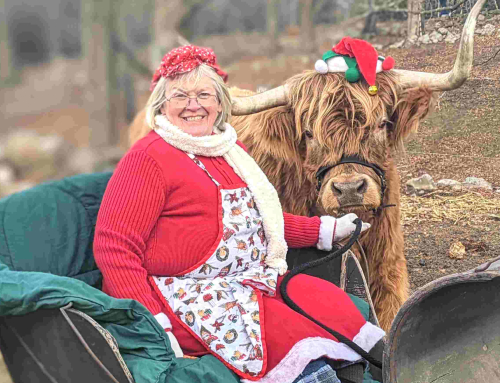As autumn fades, decorative pumpkins, gourds, and squashes are discarded, with some of them rolling out to my cattle. A special treat for them is a pumpkin that has been frozen then thawed to a soft-squishy consistency; the better to bite into.
With no top teeth, biting is not their forte. But they do some impressive work with their bottom incisors, mashing food against a hard pad on their upper jaw and following up with a full set of back molars to grind food just like we do.
That’s how they deal with acorns. Bitter as they are to us, my cows love them. Friends of the farm have graciously raked up acorns that had dropped on their lawns and gardens and brought them to us. Eloise brought us bags and bags of acorns. I loaded the bags on a small trailer, which I hooked to the ATV and drove to the pasture.
A pregnant Scottish Highlander cow named Missy galloped up, skidded to a halt, and chomped into a pile of them. She crunched both acorns and shells, occasionally swinging her head at other cows as if to say, “These are MY acorns. Find your own!”
However, cows can’t live on acorns and pumpkins alone. We also feed them 1,000-pound round bales of hay, also called baleage. While still damp, this hay has been wrapped in air-tight plastic; the bales look like enormous marshmallows. The wrapped-hay ferments, and that increases its protein content and flavor. Once a day, husband Bruce and I deliver two, sometimes three, bales to the herd. I strip off the plastic covering and remove the mesh cover on each bale. Then Bruce, using the skid-steer (kind of a mini-bulldozer), puts the bales on the ground in the field for the cows to eat.
We used to put each bale in a feeding rack, thinking if it were off the ground, there would be less waste. But we found that our adult Scottish Highlander cows could get their long horns stuck in the feeder. Not only that, but 30 cows will eat an entire half-ton bale off the ground, so there’s no waste and no stuck cattle. We still use a feeder for the younger animals, whose horns are short.
So hay is the wintertime “meat and potatoes” for the cattle, but they love a side dish of acorns, pumpkins, or other donated vegetables. Variety makes for delicious meals.
So thank you to everyone who has taken the time to help give our animals an assortment of holiday food. There are fifty-five cows, four pigs, and two farmers who are very thankful.



